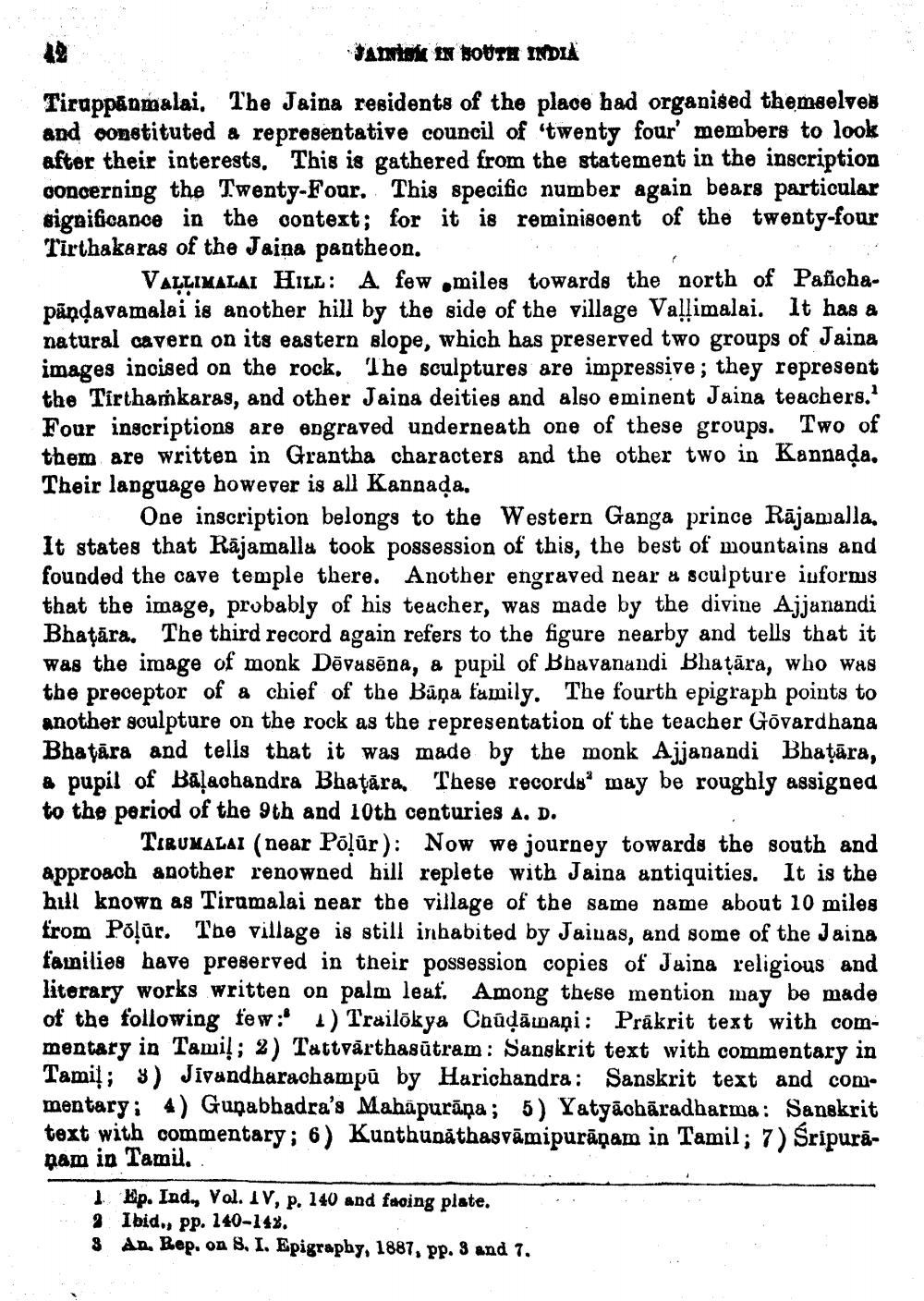________________
JAINISM IN SOUTH INDIA
Tiruppanmalai. The Jaina residents of the place had organised themselves and constituted a representative council of 'twenty four' members to look after their interests. This is gathered from the statement in the inscription concerning the Twenty-Four. This specific number again bears particular significance in the context; for it is reminiscent of the twenty-four Tirthakaras of the Jaina pantheon.
VALLIMALAI HILL: A few miles towards the north of Pañchapandavamalai is another hill by the side of the village Vallimalai. It has a natural cavern on its eastern slope, which has preserved two groups of Jaina images incised on the rock. The sculptures are impressive; they represent the Tirthamkaras, and other Jaina deities and also eminent Jaina teachers.1 Four inscriptions are engraved underneath one of these groups. Two of them are written in Grantha characters and the other two in Kannada. Their language however is all Kannada.
One inscription belongs to the Western Ganga prince Rājamalla. It states that Rajamalla took possession of this, the best of mountains and founded the cave temple there. Another engraved near a sculpture informs that the image, probably of his teacher, was made by the divine Ajjanandi Bhaṭāra. The third record again refers to the figure nearby and tells that it was the image of monk Devasena, a pupil of Bhavanandi Bhaṭāra, who was the preceptor of a chief of the Bāņa family. The fourth epigraph points to another sculpture on the rock as the representation of the teacher Govardhana Bhatara and tells that it was made by the monk Ajjanandi Bhaṭāra, a pupil of Balachandra Bhaṭāra. These records may be roughly assigned to the period of the 9th and 10th centuries A. D.
TIRUMALAI (near Pōlür): Now we journey towards the south and approach another renowned hill replete with Jaina antiquities. It is the hill known as Tirumalai near the village of the same name about 10 miles from Pōlür. The village is still inhabited by Jainas, and some of the Jaina families have preserved in their possession copies of Jaina religious and literary works written on palm leaf. Among these mention may be made of the following few: 1) Trailokya Chūḍāmaņi: Prakrit text with commentary in Tamil; 2) Tattvärthasūtram: Sanskrit text with commentary in Tamil; 3) Jivandharachampũ by Harichandra: Sanskrit text and commentary: 4) Gugabhadra's Mahapurāņa; 5) Yatyacharadharma: Sanskrit text with commentary; 6) Kunthunathasvamipuranam in Tamil; 7) Śripurapam in Tamil,
1 Ep. Ind., Vol. IV, p. 140 and facing plate.
2 Ibid., pp. 140-14%.
3 An. Rep. on 8. I. Epigraphy, 1887, pp. 3 and 7.




